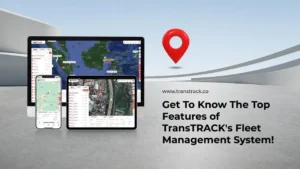Know the Types of Buses Based on Their Model, Size, and Capacity!
Posted on November 26, 2024 by Nur Wachda Mihmidati

Buses come in various models and shapes. Buses themselves are one of the most popular and efficient modes of transportation for the public. With various types and types available, buses have many options for users to fulfill their travel needs. From mini buses for short distances to large buses for sightseeing tours, buses have many options to meet the needs of passengers. In this article, we will discuss the different types of buses based on their size, capacity, facilities, and intended use. Check out the following article TransTRACK!
Types and Sorts of Buses Based on Model
Each bus model usually has different specifications and features, such as size, capacity, and engine type. Here are some types of buses based on the model:
1. Non HD / Normal Deck Bus
Non HD or Normal Deck buses are a type of bus that has decks or floors in the bus that are not high. This is different from HD (High Deck) buses which have higher decks and provide additional space for passengers.
The ticket cost range for Non HD buses is usually cheaper compared to HD buses. Ticket prices vary depending on the travel distance, facilities, and destination location.
Facilities available on Non HD buses usually include comfortable passenger seats, air conditioning, and music players. Some buses also provide additional facilities such as Wi-Fi, big-screen TVs, and toilets. The facilities provided on Non HD buses vary depending on the bus operator and the ticket price paid.
2. High Deck (HD) Bus
High Deck (HD) buses are a type of bus that has a higher deck or floor in the bus compared to Non HD buses. This deck height provides additional space for passengers and makes the space inside the bus feel more spacious and comfortable.
The ticket cost range for HD buses is usually more expensive compared to Non HD buses. Ticket prices vary depending on travel distance, amenities, and destination location.
Amenities available on HD buses usually include more comfortable and wider passenger seats, air-conditioning, music players, and larger luggage space. Some buses also provide additional facilities such as Wi-Fi, big-screen TVs, and toilets. The facilities provided on HD buses vary depending on the bus operator and the ticket price paid.
3. Super High Deck (SHD) Bus
Super High Deck (SHD) buses are a type of bus that has decks or floors in the bus that are very high and higher than High Deck (HD) buses. This deck height provides additional space for passengers and makes the space inside the bus feel very spacious and comfortable. Amenities available on SHD buses typically include very comfortable and wide passenger seats, air conditioning, music players, and a very large luggage space. Additional amenities such as Wi-Fi, big-screen TVs, and restrooms may also be available on SHD buses. The ticket cost range for SHD buses is usually more expensive compared to HD buses. Ticket prices vary depending on the distance traveled, facilities, and destination location.
4. High Deck Double Glass (HDD) Bus
High Deck Double Glass buses are a type of High Deck (HD) bus that has double glass on the top of the bus. This double glass aims to provide a better view for passengers and reduce noise from outside. In addition, double glazing also provides a higher level of privacy and comfort for passengers.
The ticket cost range for High Deck Double Glass buses may be more expensive compared to regular High Deck (HD) buses. Amenities available on these buses typically include comfortable and wide passenger seats, air conditioning, music players, and large luggage space. Additional amenities such as Wi-Fi, big-screen TVs, and restrooms may also be available. Ticket prices vary depending on travel distance, amenities, and destination location.
5. Double Decker (DD) Buses / Double-Decker Buses
Double-Decker Buses or Multi-Decker Buses are used for mass travel and the travel or tourism industry and are usually connected with the iconic red AEC Route master transportation in many countries. These buses have two decks for travelers with stairs to access the upper deck.
Alternatively called double-height buses, Double-Decker buses are used in several metro areas in the world. Double-Decker buses are limited to the routes they can take due to their height (about 14.5 feet) as the driver must stay away from scaffolding, utility networks, or other obstructions with low clearances. When used for public transportation, they may not be efficient for continuous stops given the additional time passengers need to disembark. They are well suited for longer trips such as local express routes.
6. Ultra High Decker (UHD) Bus
Ultra High Decker (UHD) buses are a type of bus that has very high decks or floors in the bus, higher than Super High Deck (SHD) buses. This deck height provides additional space for passengers and makes the space inside the bus feel very spacious and comfortable.
The ticket cost range for UHD buses is usually more expensive compared to SHD buses. Ticket prices vary depending on the distance traveled, amenities, and destination location.
Amenities available on UHD buses usually include very comfortable and wide passenger seats, air conditioning, music players, and a very large luggage space. Some buses also provide additional amenities such as Wi-Fi, big-screen TVs, and restrooms. The facilities provided on UHD buses vary depending on the bus operator and the ticket price paid.
Types and Sorts of Buses Based on Size and Capacity
Types and Sorts of Buses Based on Size and Capacity is a categorization of buses that are distinguished based on the size and maximum capacity of passengers that can be accommodated by the bus. Some types of buses based on size and capacity include Big Bus, Medium Bus, Mini Bus / Micro Bus, and Mini Van. Each type of bus has a different size and capacity and is usually used for different travel distances and has different ticket prices. The facilities provided on each type of bus also vary.
1. Big Bus
A Big Bus is a type of large, multi-storey bus designed to carry a large number of passengers. They are commonly used for sightseeing tours, city tours, and other similar purposes. Big Buses are equipped with comfortable seats, large windows for better views, and often have audio systems to provide information and commentary to passengers. The size and capacity of Big Buses vary, but they usually have a capacity of around 50-70 passengers. The cost of a Big Bus tour also varies depending on the duration of the tour, the destinations visited and the type of services offered.
2. Medium Bus
Medium Bus is a type of bus with medium size and capacity. The size of this bus is larger than a mini bus but smaller than a large bus or big bus. Medium Bus is usually used for longer travel distances than mini buses but shorter than large buses. Passenger capacity on Medium Bus ranges from 25-40 people. Ticket prices for Medium Buses are usually more expensive than mini buses but cheaper than large buses. Facilities offered on Medium Buses also vary depending on the operator and bus type.
3. Minibus/Micro Bus
These buses have a small size and relatively low passenger capacity. They are usually used for short distances and have very affordable ticket prices.
4. Mini Van
A Mini Van is a type of van or small car that is designed to transport several people. Mini vans are usually smaller than standard vans and have a smaller passenger capacity, usually around 8-15 people. Mini Vans are often used for short-distance travel or as a personal alternative for transportation. Ticket prices for Mini Vans are usually cheaper than standard buses or vans, but more expensive than taxis or ojek. The facilities offered on Mini Vans are usually simpler compared to standard buses or vans.
Bus Classification by Function
Bus classification based on function makes it easier for us to choose the right bus, whether for daily travel, tourism, or inter-city travel. Here are some types of buses that can be found based on their usage function:
1. Public Bus
- Function: Used for passenger transportation within the city or between regions over short distances.
- Characteristics:
- Operates with fixed routes and regular schedules.
- Have varying passenger capacities, from small to large.
- Standard facilities such as seating, electronic payment system, and air conditioning.
2. Tourist Bus
- Function: Used for sightseeing trips or tours with specific destinations, both domestic and international.
- Characteristics:
- Equipped with luxurious amenities, such as comfortable seats, toilets, entertainment (TV, Wi-Fi), and more legroom.
- Used by travel agencies or tour groups for long-distance travel with more comfort.
3. Intercity Bus
- Function: Connects more distant cities or regions, with greater capacity for long-distance travel.
- Characteristics:
- Equipped with air-conditioning, wider seats, and other entertainment such as TV.
- Sometimes food or drinks are provided for convenience during long journeys.
4. School Bus
- Function: Transporting students to and from school.
- Characteristics:
- Has safety systems such as seat belts and strict supervision for the safety of children.
- Usually only used for educational purposes and not available to the public.
5. Electric Bus
- Function: A bus that uses electricity as an energy source, is environmentally friendly and more efficient than fossil fuel buses.
- Characteristics:
- Uses a battery or charging system to drive the electric motor.
- Usually used in big cities that want to reduce air pollution and exhaust emissions.
You can choose this type of bus according to the needs that will be used. With a wide selection of bus types available, passengers can choose a bus that suits their budget. From mini buses for short-distance travel to large buses for sightseeing tours, each type of bus has its own advantages and disadvantages. However, the most important thing is to ensure that the bus chosen has adequate facilities and is safe for passengers. Therefore, it is important for passengers to consider various factors before choosing the type of bus that suits their needs. Thus, traveling by bus can be a comfortable and enjoyable experience for passengers.
Now, for those of you who own fleet companies and other vehicles, you can use the Fleet Management System to optimize the performance of the system operations. You can control the behavior of drivers who may be sleepy, control fuel consumption, and improve safety with the features in the FMS. Use TransTRACK FMS and make your fleet operations more optimal!
Recent Post
Topic :
 Bahasa Indonesia
Bahasa Indonesia









